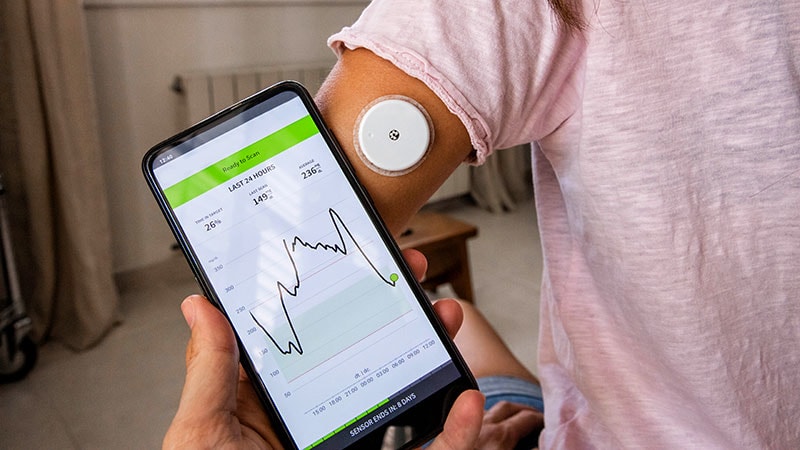Digital Health Tech Impact on Patients and Healthcare Professionals
المفاهيم الأساسية
Patients are becoming the point of care in the digital health era.
الملخص
The article discusses the transformative impact of digital health technologies on patients and healthcare professionals. It highlights the positive changes brought about by AI tools, digital sensors, medical apps, and robotic suits in healthcare settings. The core message emphasizes the shift towards patients becoming the point of care themselves, enabled by digital technologies. Key insights include the role of AI in improving patient understanding and diagnosis speed, the importance of regulating healthcare apps, and the need for trust, awareness, and education in adopting new technologies.
تخصيص الملخص
إعادة الكتابة بالذكاء الاصطناعي
إنشاء الاستشهادات
ترجمة المصدر
إلى لغة أخرى
إنشاء خريطة ذهنية
من محتوى المصدر
زيارة المصدر
www.medscape.com
Digital Health Tech: When Patients Become the Point of Care
الإحصائيات
"The COVID-19 pandemic fast-tracked telemedicine, as it became available in many European countries out of necessity."
"A recent infographic, designed by Meskó and published on The Medical Futurist website, highlights the current and near-future trends of 40 different health technologies and their availability to physicians and patients."
"ORCHA, based in the UK but working across the world, was established in 2015 with the aim of assessing and facilitating the distribution of accessible, high-quality health apps on a global scale."
اقتباسات
“There could be Chat GPT-like tools that are specifically trained on medical data. One example is PaLM2 from Google, which has already been shown to be capable of solving medical cases, not just answering basic medical questions.” - Bertalan Meskó
“By creating a standardised framework, the public can confidently trust the reliability and efficacy of the health apps they use.” - Liz Ashall-Payne
الرؤى الأساسية المستخلصة من
by Lara Reid في www.medscape.com 06-07-2023
https://www.medscape.com/viewarticle/digital-health-tech-when-patients-become-point-care-2023a1000ccn
استفسارات أعمق
How can countries ensure effective governance for new healthcare technologies?
Countries can ensure effective governance for new healthcare technologies by implementing robust regulatory frameworks that oversee the development, deployment, and monitoring of these technologies. This includes establishing clear guidelines for data privacy and security, ensuring compliance with medical standards, and conducting regular audits to assess the safety and efficacy of digital health tools. Additionally, countries can collaborate with international organizations and regulatory bodies to harmonize standards and share best practices in regulating healthcare technologies. By promoting transparency, accountability, and stakeholder engagement, countries can create a regulatory environment that fosters innovation while safeguarding patient interests.
What are the potential risks associated with patients becoming the point of care in the digital health era?
The shift towards patients becoming the point of care in the digital health era brings several potential risks. One major concern is the accuracy and reliability of self-diagnosis and self-treatment, as patients may misinterpret medical information or rely on unverified sources. This can lead to delays in seeking professional medical help, incorrect treatment decisions, or exacerbation of health conditions. Moreover, the increased reliance on digital technologies for healthcare may widen the digital divide, leaving vulnerable populations with limited access to quality care. Data privacy and security issues also arise, as patient-generated health data may be vulnerable to breaches or misuse. Additionally, the lack of regulatory oversight in some regions can result in the proliferation of unvalidated health apps and devices, posing risks to patient safety and well-being.
How can the global healthcare system adapt to the increasing reliance on digital interactions for patient care?
The global healthcare system can adapt to the increasing reliance on digital interactions for patient care by prioritizing digital health literacy among healthcare professionals and patients. This includes providing training on the use of digital tools, promoting evidence-based practices in telemedicine and remote monitoring, and fostering a culture of continuous learning and adaptation to technological advancements. Collaborative efforts between governments, healthcare providers, technology companies, and regulatory bodies are essential to establish interoperable systems, data standards, and telehealth guidelines that ensure seamless and secure digital interactions. Embracing patient-centered care models that empower individuals to actively participate in their health management through digital platforms can enhance engagement, adherence to treatment plans, and overall health outcomes. By investing in infrastructure, policies, and education that support the integration of digital technologies into healthcare delivery, the global healthcare system can harness the potential of digital interactions to improve access, efficiency, and quality of care for all individuals.
0
